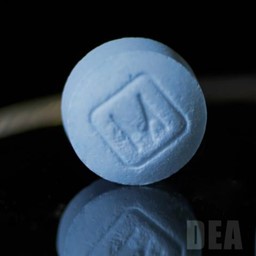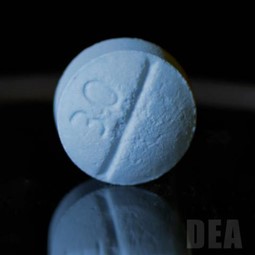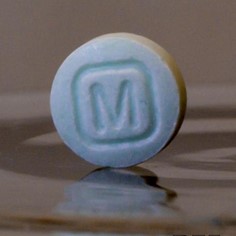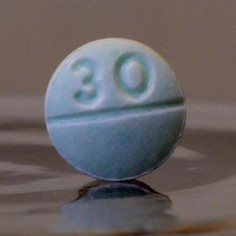
Criminal drug networks are flooding the U.S. with deadly counterfeit pills according to the U.S. Drug Enforcement Administration[1]. These pills are manufactured by criminal organizations and are often sold on social media and e-commerce platforms, making them available to virtually anyone with internet access. Many of these counterfeit pills are made to resemble prescription drugs such as oxycodone, hydrocodone, and alprazolam. From January to September 2021, more than 9.5 million counterfeit pills were seized–more than the total number seized in 2019 and 2020 combined[2]. DEA lab testing also reveals that 2 out of every 5 counterfeit pills containing fentanyl contains a potentially lethal dose[2].
Identifying counterfeit pills on the street is difficult. Individuals who manufacture counterfeit pills strive to make them look identical to authentic prescription drugs. The only way to identify counterfeit pills on the street is through field testing. Due to fentanyl and fentanyl analogs’ extreme toxicity, these substances are only found in very small concentrations within counterfeit pills (typically under 5%). These small concentrations make field testing of pills by law enforcement officers and identification of trace levels of synthetic opioids within those pills extremely difficult. Bulk detection technologies lack the sensitivity to detect these trace levels of narcotics. More often than not, bulk detection technology might be able to identify the bulk cutting agent that is being used (acetaminophen, lactose, boric acid, etc.), but leave the actual narcotic or deadly fentanyl undetected.


Above: Front and back photos of authentic oxycodone pills as provided by the U.S. Drug Enforcement Administration


Above: Front and back photos of counterfeit oxycodone pills as provided by the U.S. Drug Enforcement Administration
The MX908 excels at detecting trace-level narcotics in cutting agents like the mixtures found in counterfeit pills. Due to the high level of sensitivity, the MX908 can see through bulk cutting agents and identify controlled substances like fentanyl and its analogs. This capability allows for the easy identification of counterfeits on the street and allows law enforcement officers to safely further their investigation without waiting on results from a core forensics laboratory. The MX908 is also armed with a Fentanyl Analog Classifier which can identify a common molecular structure found in 2000+ fentanyl analogs. This gives the MX908 the capability to alarm for a wide range of suspected fentanyl analogs.
This capability provides users with a “future-proof” method of detecting fentanyl analogs to stay ahead of criminals who may alter the chemical structure of the drug to avoid other detection techniques.
To learn more about the MX908 and how it compares to bulk technologies when it comes to identifying street fentanyl, check out this case study.
References
1. United States Drug Enforcement Administration, One Pill Can Kill Public Safety Alert, September 2021, https://www.dea.gov/onepill
2. United States Drug Enforcement Administration, Counterfeit Pills Fact Sheet, September 2021, https://www.dea.gov/sites/default/files/2021-09/DEA_Fact_Sheet-Counterfeit_Pills.pdf
